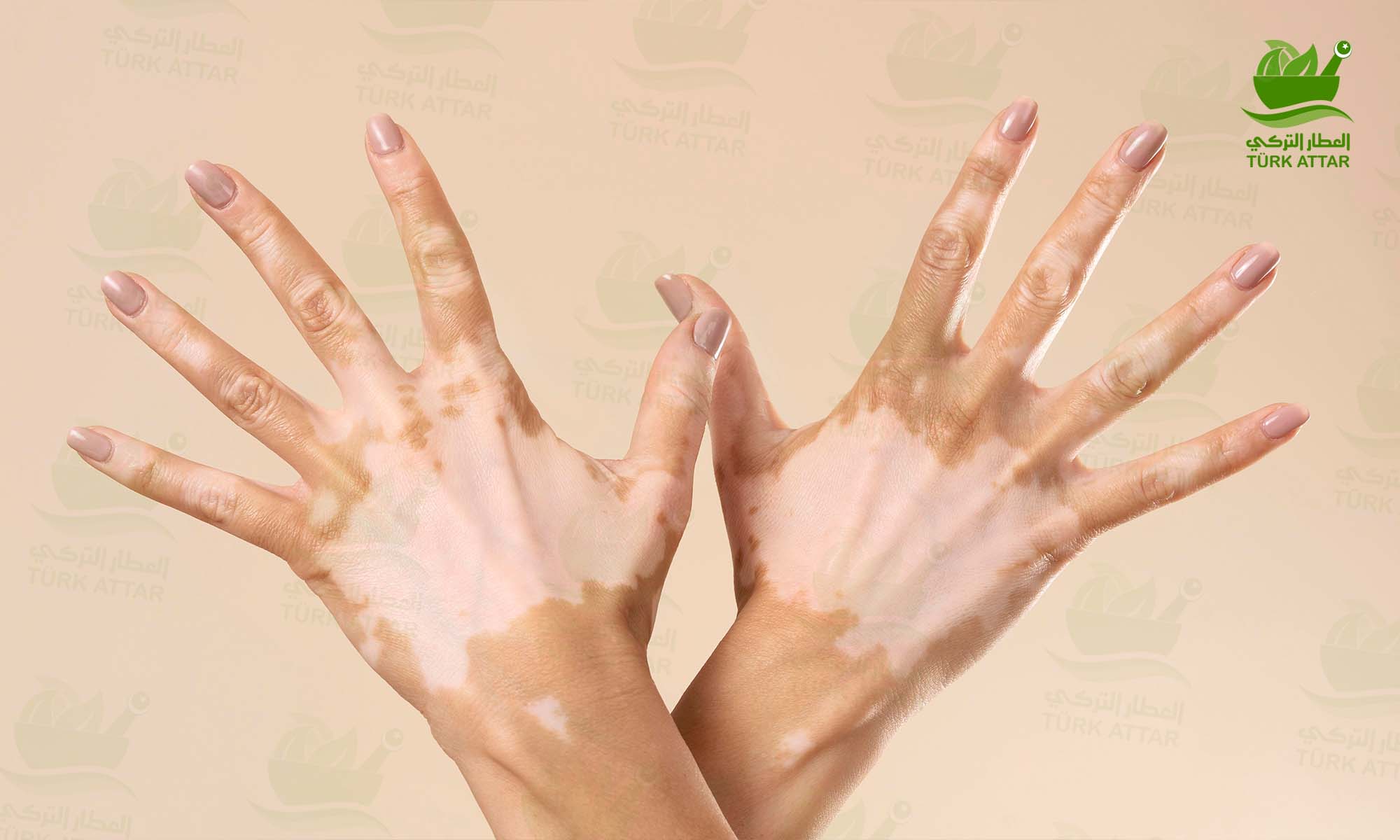
Vitiligo is not life-threatening or contagious. However, its appearance can be a source of stress and anxiety and can make the individual feel bad. Complications of vitiligo include patients experiencing social or psychological distress due to blemishes on their skin.
What is Vitiligo?
Vitiligo is a skin disease that causes white patches to appear on the skin. It cannot be predicted how large an area and at what intensity the color loss caused by vitiligo will occur. Vitiligo can affect the skin in any part of the human body. Affectable areas include hair or the inside of the mouth.
Under normal conditions, the color of hair and skin in the human body is determined by melanin. Vitiligo occurs when the cells that produce melanin stop working or die. Although vitiligo affects people of all skin types, its presence can be seen more prominently in people with dark skin.
Vitiligo is not life-threatening or contagious. However, its appearance can be a source of stress and anxiety and can make the individual feel bad. Complications of vitiligo include patients experiencing social or psychological distress due to blemishes on their skin.
In addition, sunburns and increased risk of skin cancer, eye problems such as iris inflammation and hearing loss are also seen in the affected areas due to vitiligo.
During the vitiligo treatment process, the affected skin may regain color. However, it is necessary for the individual to comply with the treatment conditions on a regular basis. This treatment does not prevent permanent loss of skin color or recurrence of vitiligo.
Reasons
What Causes Vitiligo?
Vitiligo occurs when melanocytes, the pigment-producing cells, stop producing melanin, the pigment that gives color to the skin, hair, and eyes, or when these cells die. Light-colored or white spots begin to appear on the parts of the skin that suffer from this condition.
It is not known exactly why these cells stop producing melanin or why they die. However, a disorder that causes the immune system to attack and destroy melanocytes in the skin, or a triggering event such as sunburn, stress, or exposure to industrial chemicals, is thought to cause vitiligo. In addition, even if the presence of vitiligo in the family reveals the possibility that it can be seen in the next generations, this is not a certain situation.
When vitiligo is suspected, the possibility of other medical problems such as dermatitis or psoriasis is tried to be eliminated during the examination to be performed. For the correct diagnosis of vitiligo, the skin can be examined with a special lamp that emits ultraviolet light.
In addition to collecting information about the individual's personal and family medical history and examining the skin, a small sample of the skin may be taken from the affected area for biopsy.
A blood sample may also be taken to determine in the laboratory the possibility of an underlying autoimmune condition, such as anemia or diabetes.
Symptoms
What Are the Symptoms of Vitiligo?
The most important symptom of vitiligo is the irregular loss of skin color. It appears as white or light-colored patches on the skin, but not all white patches are vitiligo.
Usually, discoloration first appears on areas that are more exposed to the sun, such as the hands, feet, arms, face, and lips. Other symptoms of vitiligo other than loss of skin color include premature graying of hair, eyelashes, eyebrows or beard, discoloration of the mucous membrane tissues lining the mouth and nose, and discoloration of the retina of the eye.
Vitiligo can start at any age, but most often it first appears before the age of 20. The areas that lose their color may cover different parts of the body at different rates, depending on the type of vitiligo present in the individual. In the most common type, called generalized vitiligo, the discolored patches usually progress symmetrically and similarly on opposite parts of the body. This type of vitiligo is seen in more than one part of the individual's body.
Another type, called segmental vitiligo, which covers only one side or part of the body, occurs at younger ages. This type stops after a year or two. The type that affects one or a few parts of the body is called localized (focal) vitiligo.
It is difficult to predict how vitiligo will progress. In some cases, white patches stop expanding on their own before the treatment process begins. More commonly, the loss of pigment persists and eventually covers a large part of the skin. In very rare cases, the skin can regain its color.
In case of unexpected discoloration of the skin, hair and eyes, it is necessary to consult a doctor. There is no known effective cure for vitiligo. However, during the treatment process, the color change can be stopped, slowed down and some color can be restored to the skin.
Treatment Methods
What are Vitiligo Treatment methods?
There are many treatment methods used to correct the skin color and even to make the skin tone uniform in general. However, the results obtained are unpredictable. Different results are seen in each case. Some treatments used have serious side effects.
For this reason, it may be recommended to try to improve the appearance of the skin by applying tanning products or make-up at the first stage. If treatment is undertaken with medications, surgery or therapy, it may take months to determine how effective this process is.
More than one approach or a combination of these approaches may be tried before the most appropriate treatment can be found in each case. Treating vitiligo doesn't mean it won't happen again. Individuals with vitiligo should definitely go out under the sun by using sunscreen with a high protection factor and broad-spectrum effect.
How is Vitiligo Treated?
No drug can stop the process of loss of pigment cells (melanocytes) seen during vitiligo. However, some medications used alone or in combination with light therapy can help restore some of the skin tone. Among these drugs are creams that control inflammation.
Applying corticosteroid cream to affected areas of the skin can help return lost color, especially if started in the early stages of the disease. A change in skin color may not be observed for several months. These types of creams are effective and easy to use.
However, it can cause side effects such as thinning skin or creating wrinkles or lines on the skin. Milder forms of such drugs may be prescribed to children and individuals with very large areas of discolored skin affected by vitiligo.
Medications that affect the immune system, such as ointments containing calcineurin inhibitors such as tacrolimus or pimecrolimus, may be effective for individuals with small discolored areas, especially in the face and neck area. This treatment normally has fewer side effects than corticosteroids and can be used in conjunction with ultraviolet B (UVB) light therapy.
With a therapy method that combines a plant-derived substance called psoralen and light therapy called photochemotherapy, it is tried to give color to the spots.
After taking psoralen by mouth or applying it on the affected skin, the individual is exposed to ultraviolet A (UVA), ultraviolet B (UVB) light, or excimer laser light. This combined approach appears to yield better results than medication alone or light therapy alone. These treatments continue with sessions of six to twelve months, performed more than once a week.
Removal of remaining color, ie depigmentation, is seen as an option in cases where vitiligo is very common and other treatments have not been effective.
A lightening application is applied to the areas of the skin that are not affected by vitiligo, and the color of these areas is gradually lightened. This therapy continues for nine months and is repeated once or twice a day. It has side effects such as redness, swelling, itching and dry skin. This depigmentation method is permanent and greatly increases sensitivity to sunlight.
If light therapy is not effective, surgical intervention is one of the options. Surgical intervention can be used in conjunction with other treatment methods.
The aim of surgical techniques is to equalize the skin tone by adding the color back to the discolored areas. For this, small sections of normal, pigmented skin are taken and connected to the areas that have lost pigment. The risks of this technique include infection, scarring, a patchy appearance, and lack of color and recoloration of that area of the skin.
In the blister inoculation procedure, blisters are usually created by suction on the pigmented skin. The upper parts of these blisters are then removed and transplanted into a discolored skin area. Possible risks of this procedure include scarring, a patchy appearance, and non-recoloring of the area. In addition, skin damage caused by sucking can trigger another patch of vitiligo to appear.
In the tattoo, that is, micropigmentation technique, the pigment is placed directly on the skin with the help of a special surgical instrument. It is most effective in and around the lips of darker skinned individuals.
To minimize the effects of vitiligo, the skin should be protected from the sun and artificial sources of UV rays. A broad-spectrum, water-resistant sunscreen with a protection factor of at least 30 should be used liberally, especially for fair-skinned individuals. It is possible to protect the skin from the sun with shades and appropriate clothing.
Sun lamps and artificial tanning beds should not be used. Protecting the skin from the sun helps prevent both sunburn and long-term damage. A bad sunburn can exacerbate the condition of the disease. Since sunscreens minimize tanning, they make the contrast between normal and discolored skin less noticeable.
Appropriate make-up products can be used to hide the affected skin. If sunless tanning products are to be used, a product containing dihydroxyacetone should be preferred.
It is necessary to avoid getting tattoos that are not related to vitiligo treatment. Damage to the skin from the tattoo can reveal a new patch of vitiligo within two weeks.
The use of natural products and herbs in the treatment of vitiligo is possible after consulting a doctor. Studies with limited scope,
It shows that the ginkgo biloba herb can cause skin color reversal in vitiligo patients. Other small studies show that alpha-lipoic acid, folic acid, vitamin C and vitamin B12 plus phototherapy can partially restore skin color in some cases.
